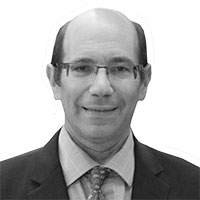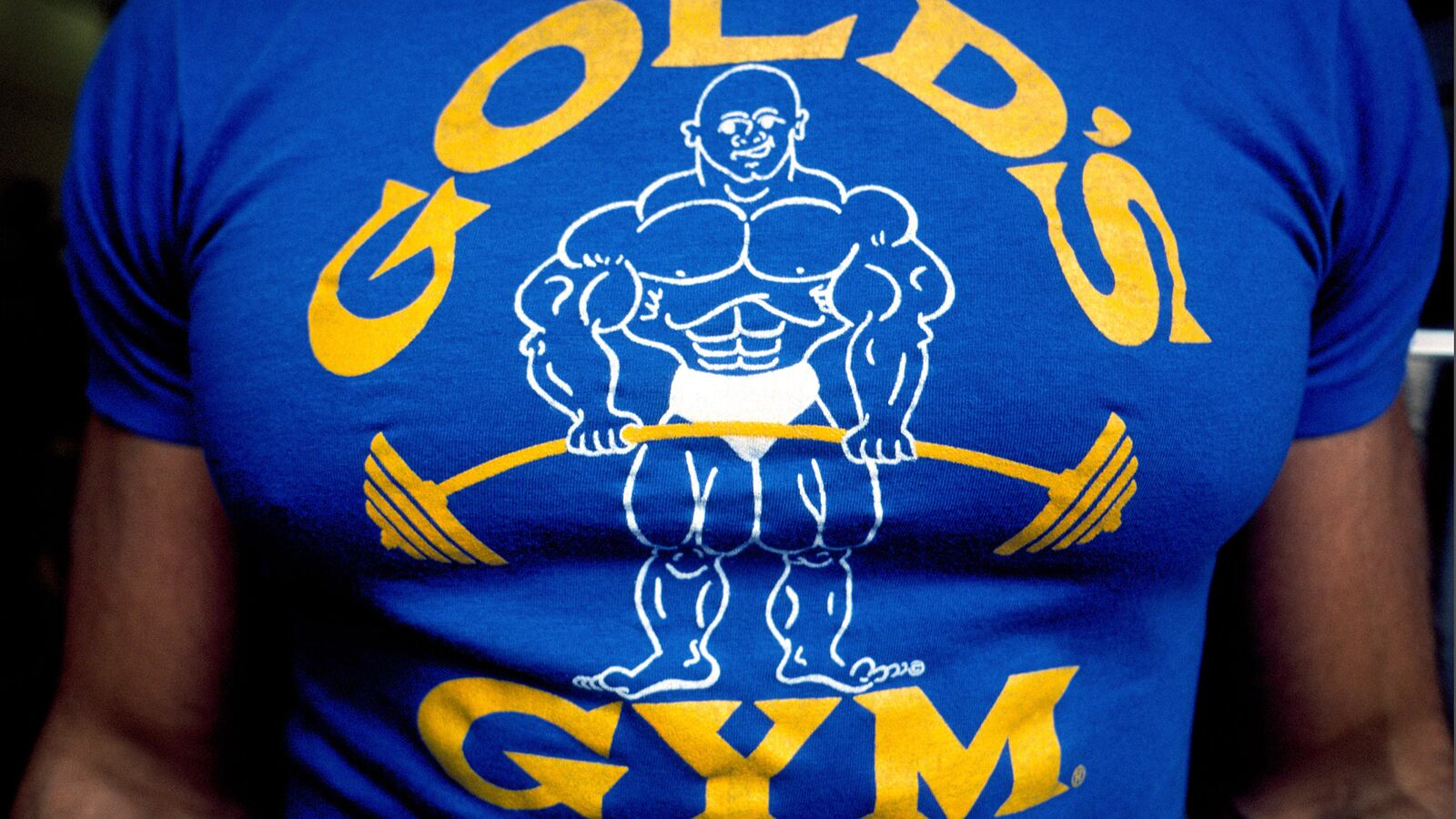Joe Gold lived by metal—and almost died by metal. The iron-pumping, machine-welding body-builder, exercise-machine maven, and gym genius who helped turn America buff barely survived a paralyzing torpedo injury in the Philippines during World War II.
Young men today feel incredibly pressured to look “cut,” with sharply defined delts and perfect “six-packs,” because Los Angeles’ mid-century Muscle Beach created the 21st century’s Muscle Nation. That broad-shouldered, taut strut, once limited to an urban subculture of gym rats, has lured millions of suburban teenagers into bench-pressing and abdominal-crunching. People usually claim Arnold Schwarzenegger and Sylvester Stallone created the modern American male’s body image. But before Ah-nold, there was Joe.
Joe Gold was born in 1922 in East Los Angeles, the son of a junk dealer. One of many American Jews who, contrary to the stereotypes, made it thanks to Max Baer/Hank Greenberg brawn not Woody Allen/Henry Kissinger brains, Gold and some buddies established the “Dugout Repair Shop” in junior high school. They lifted barbells in a garage while fiddling with cars and other machines. As a teenager, Gold started hanging out on the Santa Monica Pier’s Muscle Beach, mixing with Hollywood stuntmen, circus acrobats, and the city’s body-builders.
Always balancing his loves of body-building and seafaring, Gold moved to New Orleans as a member of the Merchant Marine. He opened his first gym there, then shipped off to the Philippines during World War II. Alas, his ship was torpedoed, his body crushed. Gold survived, enduring a six-month hospital stay. (The pain lingered for the rest of his life. In the years before he died in 1982, he returned to the wheelchair some doctors in the 1940s thought he’d never leave.)
After a detour in Las Vegas in 1956 to flank Mae West in an all-male musclebound chorus line, Gold returned to Muscle Beach. When a spate of sexual-abuse cases among the body-builders prompted the city fathers to banish exercise equipment from the beach in 1959, Gold, who was already investing in local real estate, started planning his gym.
The usual dank and dirty sweat shack was not for Joe Gold. He was a body sculptor, chiseling muscles with precision-guided exhortations, expertly devised workouts, compulsively crafted machines, and obsessively managed Spartan environments. Gold made his own machines, going far beyond dumbbells and barbells.
Gold’s Gym opened on Venice Beach in 1965. For $60 a year, some Californians unwittingly became the Sons of Liberty of America’s Fitness Revolution, rebelling against flabby muscles and pot bellies.
Gold wanted the atmospherics rough and masculine, refusing to provide air conditioning or heating. He “didn’t give a rat’s ass if you were comfortable or not,” one admirer recalls, he worked you to the bone. No lattes or enhanced waters would be found in these sweatboxes—at least initially.
This tough taskmaster was also a good friend. Gold christened each regular with a nickname that preyed on the client’s insecurities—while goading him to do his best. When a talented but poor kid from Austria needed money, Gold let him work out without paying dues. Such kindness didn’t stop him from berating Arnold Schwarzenegger. “He thought I had this massive body and that my abdominals were not defined enough. Instead of saying ‘Define your abs’ more or ‘Train your waist’ more, he would say, ‘Hi, Balloon Belly,’” Schwarzenegger recalls. “It inspired me to kill myself working out my abs."
John Romano and many other body-builders repaid Gold’s devotion with their own sense of awe, recalling “if you were lucky enough to be working out in one of Gold’s factories during their zenith, your life has been changed forever. It’s like your soul has received the sacrament of bodybuilding offered by its creator.” Venice Beach, Romano and others agreed, was the birthplace of “hardcore training,” and “Joe Gold was its daddy.”
Going beyond the barbell meant devising machines—launching a multibillion-dollar industry. Romano explains “Every time you stick a pin in a weight stack or grab the handles on a pulley machine, give thanks to Joe: He invented and built the very first models”—in his Venice garage! “In fact, the entire concept of ‘machines’ that we use to build muscle can trace its roots back to Joe Gold.”
Gold’s Gym became a Mecca for the new evangelicals worshipping a different body type. The unlikely success of Schwarzenegger’s Pumping Iron in 1977 popularized this phenomenon. By then, the sea had called. Joe Gold sold Gold’s Gym for $50,000, not realizing the sale included the rights to his name. Gold’s Gyms, which today have more than 700 locations globally, took off without him, but very much with him.
In 1976, when Gold realized he lost control of his name, he opened “World Gym – Owner Joe Gold.” Again relying on his amazing equipment and gruff charm, Gold rebuilt the business—building a second McDonald’s for Muscle Mania, with more than 300 locations.
When Gold opened his first gym in the 1960s, few young men worked out to get protruding pecs, exercise equipment was not found in homes, gyms were big indoor areas for basketball not climate-controlled gathering places for strange-looking machines with muscle-bound “trainers.” Americans consumed an average of 250 fewer calories daily, including 100 fewer calories of sweets. Average adults were 24 pounds lighter. The overproduction of food, and the shift, especially when eating out, to more fats and oils, bulked up America.
This latest round of an enduring American fight between the Puritan and the Rebel, between remaining virtuous and pursuing happiness, intensified in the 1990s. America’s fast-food industry grew from $6 billion in sales in 1970 to $200 billion in 2015. By 1999, there were 50.4 million “frequent exercisers” and dieting was a $40 billion business. Yet there were also 12,500 McDonald’s outlets.
Even as the percentage of overweight Americans nearly doubled to 62 percent in 2000 from 33 percent in 1960, with 27 percent considered obese, millions of Americans jogged, cycled, pumped iron, and contorted themselves in multiple ways, worshipping in Joe Gold’s cult of the sculpted.
This disparity between today’s Gluttons in Relaxed-Fit Jeans and our Spartans in Spandex is partially thanks to Joe Gold. He, too, embodied this all-American contradiction. He put the “work” in workout, without sucking out all the “fun” from fundamentals. His mixed message resulted in today’s culture mishmash. While we often pit the undisciplined Fast Foodies versus the Spartan muscle maniacs, within the muscle-buffing culture, some work hard as an expression of virtue. Others approach it as one more vehicle of vanity in our Republic of Self-Indulgence.
SUGGESTED FURTHER READING
Claudia Luther, Joe Gold, 82; Legendary Bodybuilder, 2004.
Conor Heffernan, The History of Gold’s Gym, 2016.
Ric Drasin, The Birth of World Gym, 2016.






